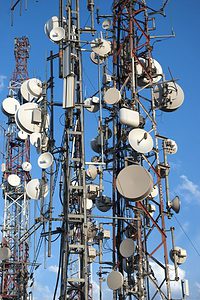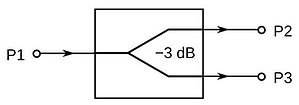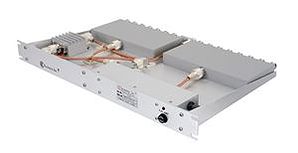How to Select Receiver Distribution Panels – Weighing the Features and Performance Factors

An ideal telecommunications tower site would have every band in critical industrial, commercial, and public safety spectrum fitted with a dedicated antenna and receive unit for optimum sensitivity. However, the large size of 30 MHz to 960 MHz antennas and radio equipment, and the congestion of many tower sites, often requires the receive antennas to pull double-, or multi-, duty. In these circumstances, receiver distribution panels can be a valuable cost, space, and time saving component that enables the use of a single antenna to feed several receivers within a band and reduce tower loading. Moreover, there are even compact receiver distribution panels that can provide high quality 8-way and 16-way splitting in 1RU, or 24-way to 32-way splitting in only 2RU in a standard 19” rack.

It is important to keep in mind, that when splitting signals, there is a power reduction proportional to the number of output channels of the power splitters used in a distribution panel. These losses can be made up with preamplification, but this function will also degrade the signal-to-noise (SNR) ratio in each channel. For these reasons, amongst others, it is essential to choose a receiver distribution panel based on its quality and electrical performance. Other considerations to keep in mind may also be the modularity of the design and what features can enable cost, installation, and maintenance saving.

Caption: For each split, which occur as a power of 2, there is an additional -3dB signal strength reduction in each output channel. Low-noise preamplifiers are often included before the power splitter to compensate for the power reduction and limit the noise added to the system.
Among the critical performance parameters of a distribution panel are: port-to-port isolation, frequency, noise figure, impedance/connectors, gain, VSWR, and linearity figures of merit. Port-to-port isolation and noise figure are especially critical, as any signal leakage or added noise can effectively reduce the sensitivity of the receiver. In high-density sites, intermodulation distortion is also a significant concern, as optimizing the intermodulation and other linearity parameters, such as third order intercept point (IP3), can ensure that unwanted spurs don’t appear strongly in a receive band. Some panels also come with a built in low-noise preamplifier, that can be invaluable in overcoming splitting and cable losses, as well as delivering the desired output power level.
Additional features, modularity, and system flexibility of a receiver distribution panel can also lead to cost and space savings on a tower site. A common occurrence is that there is limited rack space available on a tower site, and the distribution electronics must fit within a limited number of racks. Compact receiver distribution panels exist for this reason, but not all are created equal.

Modularity is a key feature, as job requirements sometimes change and additional receiver channels need to be added. Systems that can easily be upgraded with additional splitters in the field, and allow for new panels to couple to existing panels without additional parts or tuning, can be significant advantage.
As the preamplifiers in receiver distribution panels require external power, flexible power options are commonly necessary–especially in remote sites and sites that run off battery, solar panels, or thermal generator sources. Power supplies that run off either AC or DC power without a drop in performance can lead to significant site and system flexibility. Also, options to use a distribution panel as a tower top (TT) model, include redundant preamplifiers for maximum reliability, or use broadband preamplifiers instead of narrowband preamplifiers can solve many site routing and configuration challenges.
Telewave Inc. manufacturers compact receiver distribution panels that provide the performance, features, modularity, and customization options discussed previously, and more. Additional information can be found about Telewave’s Compact Receiver Distribution Panels, here: https://www.telewave.com/products/receiver-panels/.
Find out more about Telewave’s 1RU 8-way to 16-way 30 MHz to 960 MHz Compact Receiver Distribution Panels.
Find out more about Telewave’s 2RU 24-way to 32-way 30 MHz to 960 MHz Compact Receiver Distribution Panels.
Feel free to email or call us to purchase this product.

